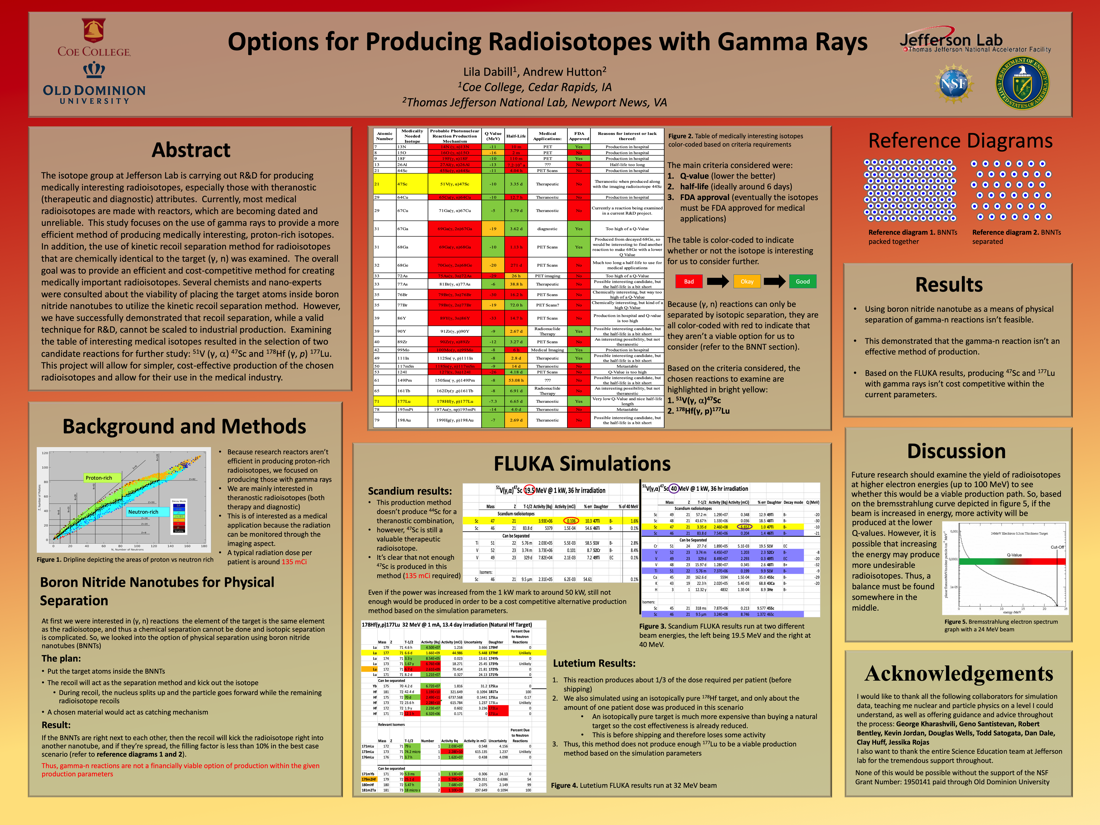Undergraduate Research at Jefferson Lab
Options for Producing Radioisotopes with Gamma Rays
Student: Lila Dabill
School: Coe College
Mentored By: Andrew Hutton
The isotope group at Jefferson Lab is carrying out R&D for producing medically interesting radioisotopes, especially those with theranostic (therapeutic and diagnostic) attributes. Currently, most medical radioisotopes are made with reactors, which are becoming dated and unreliable. This study focuses on the use of gamma rays to provide a more efficient method of producing medically interesting, proton-rich isotopes. In addition, the use of kinetic recoil separation method for radioisotopes that are chemically identical to the target (γ, n) was examined. The overall goal was to provide an efficient and cost-competitive method for creating medically important radioisotopes. Several chemists and nano-experts were consulted about the viability of placing the target atoms inside boron nitride nanotubes to utilize the kinetic recoil separation method. However, we have successfully demonstrated that recoil separation, while a valid technique for R&D, cannot be scaled to industrial production. Examining the table of interesting medical isotopes resulted in the selection of two candidate reactions for further study: 51V (γ, a) 47Sc and 178Hf (γ, p) 177Lu. This project will allow for simpler, cost-effective production of the chosen radioisotopes and allow for their use in the medical industry.
[Watch the presentation on YouTube]

Citation and linking information
For questions about this page, please contact Education Web Administrator.
